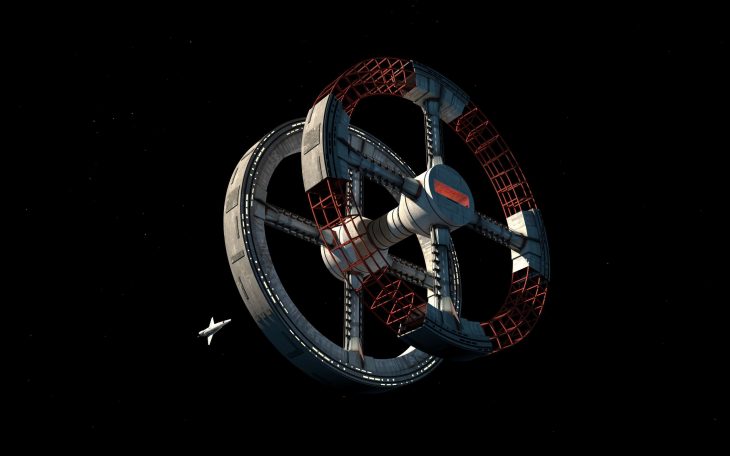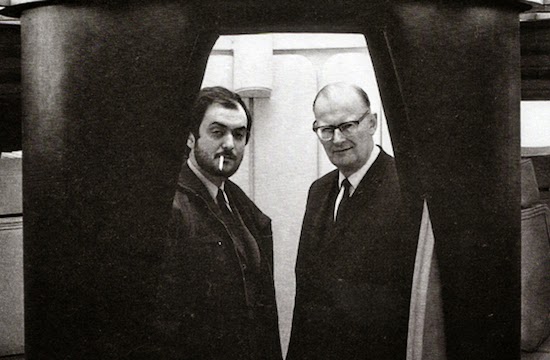
The First Men on the Moon—Kubrick and Clarke
Stanley Kubrick directed the film 2001: A Space Odyssey in 1968, working with Arthur C. Clarke to adapt several of Clarke’s stories and ideas for the screen, of which were his short stories The Sentinel and Encounter at Dawn. The result was a revolutionary piece of art which challenged the societal and cultural norms of their time—a perfect controversial movie which leaves little middle ground to its viewers—and regardless of whether you like or dislike the movie, it’s hard to argue that Kubrick and Clarke set the bar higher for films than it had been.
The greatness of 2001: A Space Odyssey can hardly be attributed to a singular person or force, for neither Kubrick nor Clarke could have achieved such a feat without the other. Clarke was not only responsible for writing the gold nugget that was the inspiration of the film, but he helped create the new story that was 2001 alongside Kubrick. A futurist at heart, Clarke did not just write science fiction—he was a prominent figure in the scientific community during his time. Together, they crafted the screenplay, and Clarke released a book with the plot of the movie very shortly after the movie was released. 2001: A Space Odyssey was never about adapting a story—it was about, as the title would suggest, a creative odyssey. It was a journey to discover what could be. The film embodies the pinnacle of genuine creativity in our world, starkly different from any fantasy writers or filmmakers that choose to leave our world for another.

Kubrick’s own creativity and innovation makes the film not just an average visualization of a story, but where Clarke’s creativity stretches the bounds of man in the fictional story, Kubrick’s creativity lent itself to creating an appropriately new means to telling the story. Kubrick was a very involved director and played a significant role in every stage of the creation of 2001: not only directing, but editing, writing, and research at a meticulous level. The visual effects of the film were unparalleled in their time, and it helped package the message of the film in an impactful way.
A disclaimer should be made here—other movies made in more traditional fashion, that is, movies which “fit in” or are faithful (or unfaithful) adaptations of books and stories into movies are not bad; there have been many which have turned into cinematic successes and classics. The phenomenon of 2001: A Space Odyssey is just that—a phenomenon of two equally marvelous men that decided to create it. All movies and filmmakers should not necessarily aspire to Kubrick’s and Clarke’s 2001, but perhaps in the way that stars must envy meteors because of the way people admire the meteors with such rarity and uniqueness, so too must other movies be held in light to 2001.
The clearest evidence of this is that both Kubrick and Clarke, apart from 2001, are known for many other great feats and contributions to society. Kubrick, though only a part of directing a handful of movies, has received critical acclaim for most of them—from The Killing and Lolita before 2001 to A Clockwork Orange and The Shining after, Kubrick cemented his legacy in the film industry. Clarke was one of the earliest proponents of space travel and helped not only progress the popularity of science fiction, but science itself, even hosting his own television show about unexplained phenomena of the world. The real unexplained phenomena, however, may be the men behind 2001 and how they managed to reach the moon without leaving Earth.